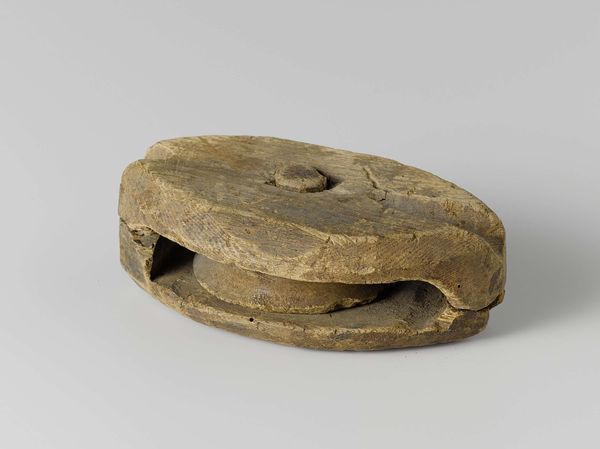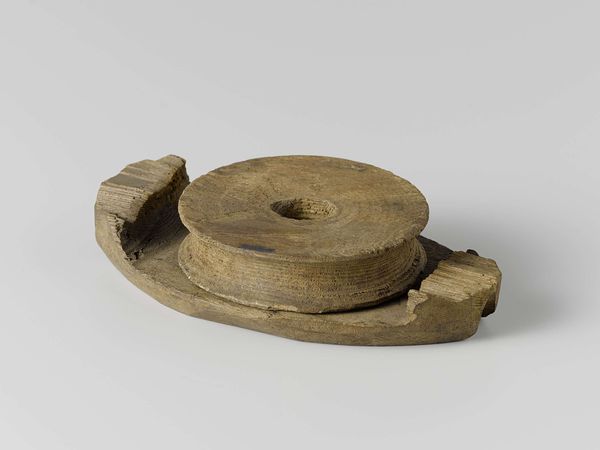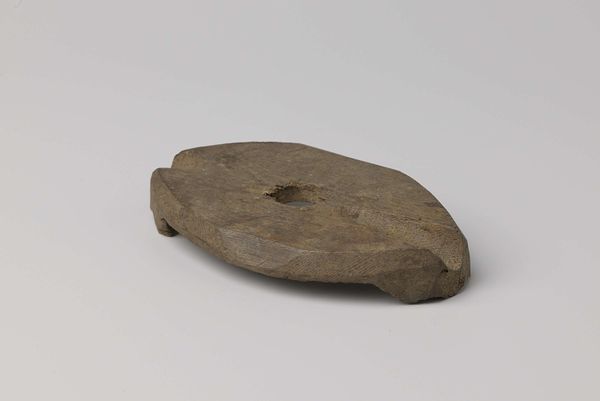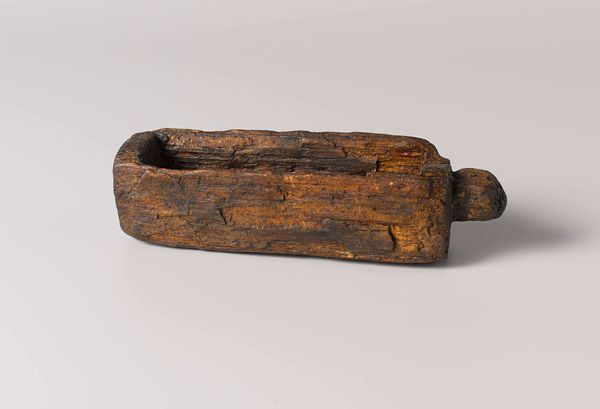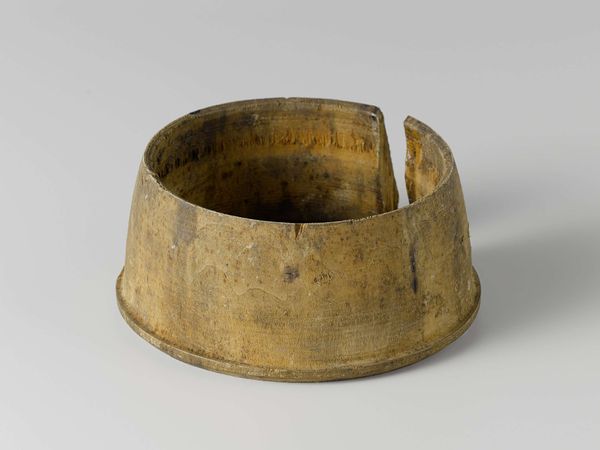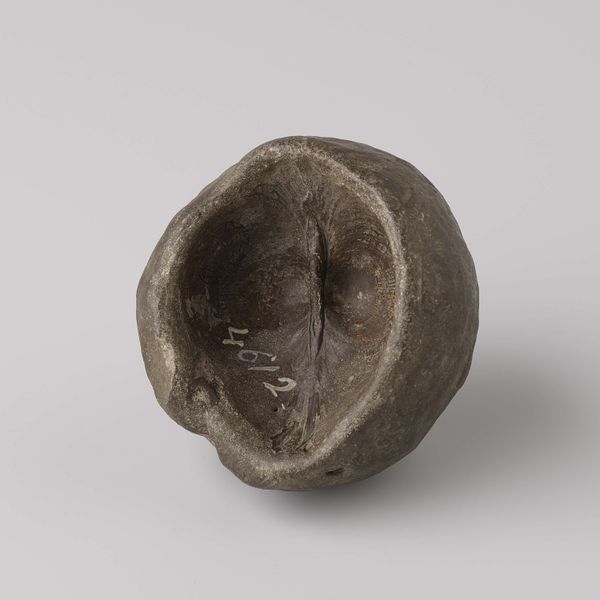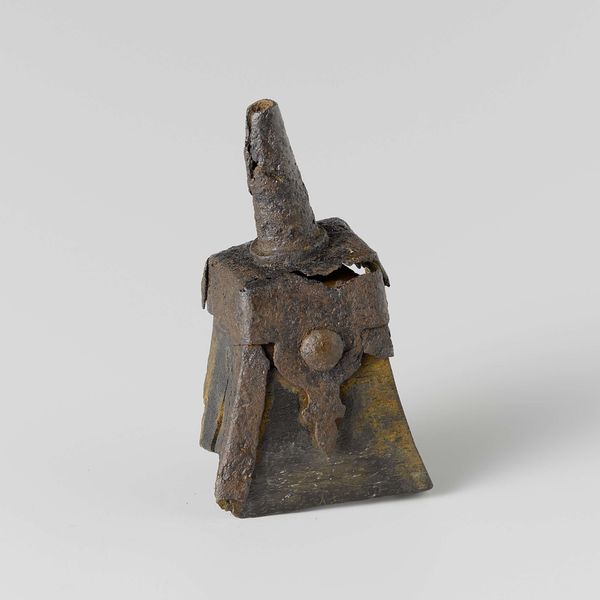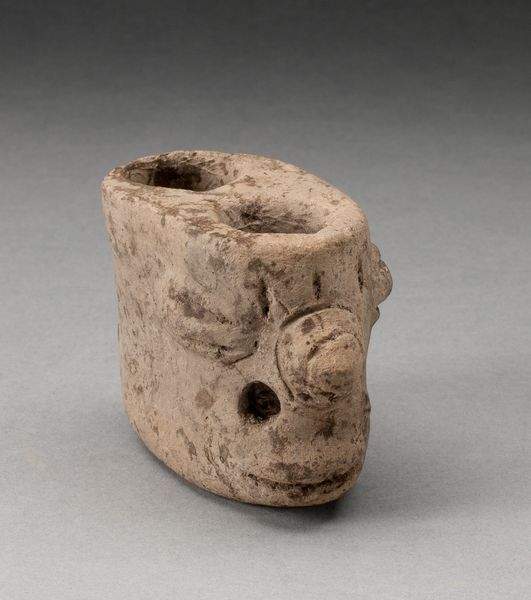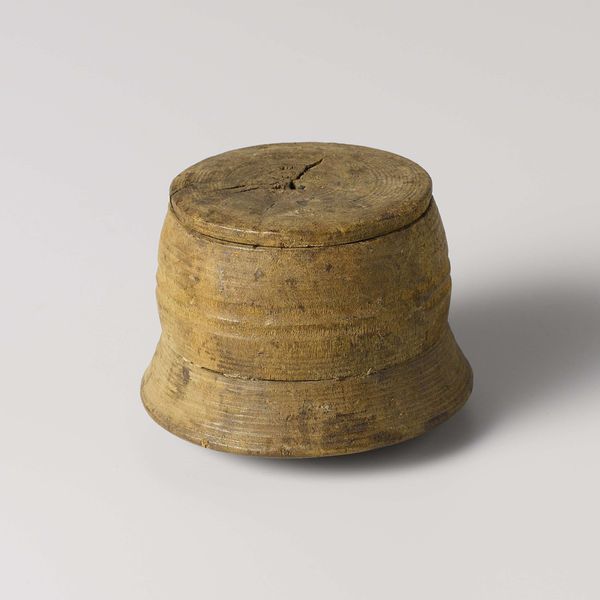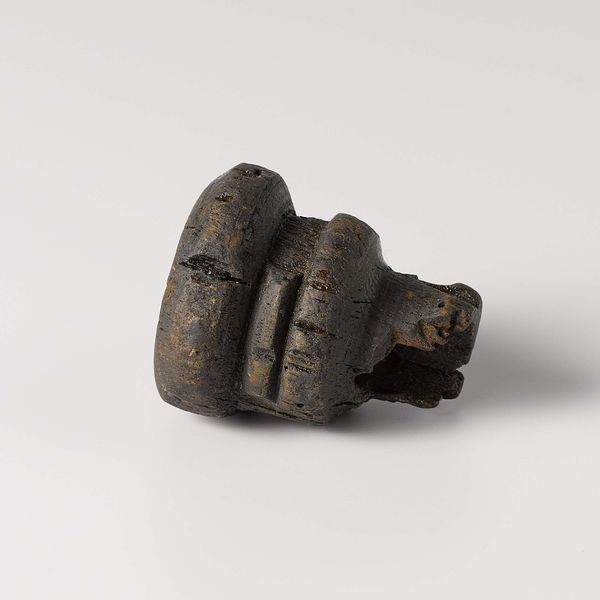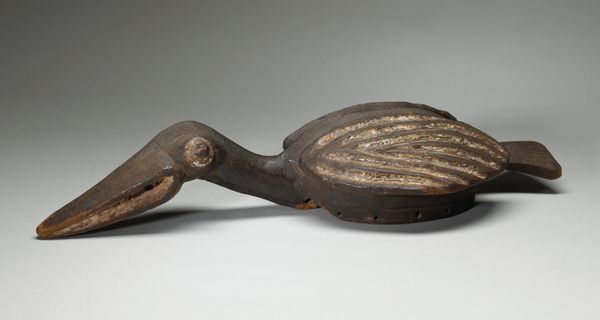
carving, wood
#
medieval
#
carving
#
wood
Dimensions: length 12 cm, width 7.7 cm, depth 4.1 cm
Copyright: Rijks Museum: Open Domain
Curator: Here we have an Enkelschijfsblok, a single-sheave block carved from wood, dating back to somewhere between 1590 and 1596. It resides in the collection of the Rijksmuseum. Editor: It's wonderfully tactile! The light catches the wood grain and really highlights its, shall we say, plump, rounded form. There's a real sense of… solidity to it. Curator: Indeed. Let's consider this piece within its historical context. Single-sheave blocks like this were crucial components of sailing ships during the late 16th century. It represents a vital technology of maritime trade and exploration. The anonymous artisan who crafted this wasn’t just making an object, but contributing to a vast, globally connected system. Editor: But look at the carving itself. The smoothness, the way the channels are so carefully shaped. You see how that center piece is both functional and creates a point of visual interest? It's beautifully balanced. Almost sculptural, really. The circular form gives a soothing, balanced harmony. Curator: I’m more interested in the material reality. Wood as a readily available, relatively inexpensive material, transformed by human labor into a tool of empire. The very grain echoes the flow of resources during the Dutch Golden Age, speaking volumes about power structures. Editor: Yes, but consider the aesthetic choice inherent in simplifying the block to this pure shape! It transcends mere function; it's a beautiful object. See how that dark patine adds character? Curator: Character born from its labor! From the rope burn and countless voyages that marked its usefulness. I wouldn’t separate its beauty from that history of production and application, it is inseparable. Editor: It seems our discussion shows there are myriad levels on which this object is important. Curator: Certainly a great representation of utility meets the human hand during the late medieval era.
Comments
No comments
Be the first to comment and join the conversation on the ultimate creative platform.
